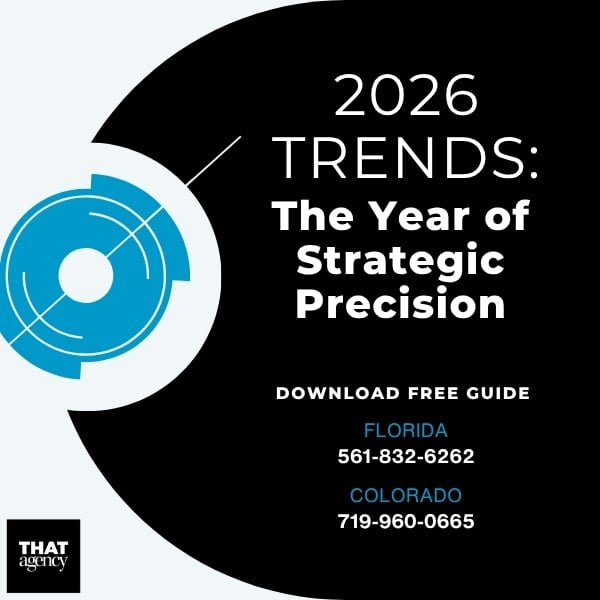If you’re an interior designer, you already know how important it is to have great taste and a strong portfolio. But in today’s crowded market, talent alone isn’t enough. To truly stand out and land high-end clients, you need a brand that reflects who you are, what you do best, and why clients should trust you. That’s where smart, consistent branding for interior designers comes in.
In this post, we’ll talk about why branding matters, how to build a strong design brand, and how to use social media for interior designers to get in front of the right audience. Whether you're just starting out or ready to grow your studio, these tips will help you build a brand that attracts your dream clients.
Let’s be honest, interior design is a competitive field. You might have incredible talent and a stunning portfolio, but if people don’t remember your name or get a clear idea of what makes you different, it’s easy to get lost in the crowd. That’s where branding for interior designers comes in.
So, what exactly is a brand?
Your brand is more than just your logo or the fonts you use on your website. It’s the overall feeling people get when they see your work, read your emails, visit your website, or scroll through your social media. It’s the personality of your business, and just like with people, personality matters.
Think of your brand as your design studio’s voice and vibe. It’s how you present yourself to the world and how clients connect with you before you even speak to them. A strong brand helps you stand out, stay top of mind, and attract the kinds of clients you really want to work with, especially those high-end clients who are looking for someone they can trust with their vision and budget.
When your branding is done well, it can:
It’s a question a lot of designers ask: If my work is strong, do I really need to focus on branding? The answer is yes.
While your work is definitely important, your brand is what gets people to stop, look, and care about your work. Many interior designers do beautiful work, but the ones who get noticed and hired consistently are the ones who present themselves clearly and confidently through their branding.
Your brand is the first impression. In many cases, it’s what someone will judge you on before they ever scroll through your portfolio or send you a message.
Without strong branding, your business can start to feel scattered or unprofessional, even if your work is amazing. You might notice that:
This can lead to fewer referrals, lower-paying projects, or confusion about what you offer.
When your brand is clear and easy to recognize, people are more likely to refer you to others. Why? Because they remember you. They know what you specialize in. And they feel confident that you’ll deliver a great experience because your brand gave them that impression.
Think about it: Would you recommend someone whose business feels confusing and unpolished, or someone whose brand looks professional, trustworthy, and high-end? Most people would go with the second option.
If you’re just starting to think about branding, focus on these areas first:
These elements are the foundation of branding for interior designers, and they’ll help you build a business that not only looks good, but feels right to your clients.
Once you understand how important branding is, the next question becomes: What does a strong brand actually look like for an interior designer?
Great question! A strong brand helps you stand out, attract your dream clients, and grow a business that feels like you. But building that kind of brand takes more than just a nice logo or a few good Instagram posts.
Let’s break down the key pieces of branding for interior designers, and how to make them work for your business.
This is often the first thing people think of when they hear the word “brand,” and for good reason. Your visual identity is the look and feel of your brand. It includes:
These should all work together to reflect the kind of design work you do.
For example, if you specialize in clean, modern interiors, your brand should feel minimal, polished, and high-end. That might mean a sleek logo, lots of white space, and neutral tones. On the other hand, if you’re known for colorful, bohemian spaces, your brand might include rich textures, bold colors, and playful typography.
Why does this matter? Because when a potential client lands on your website or social media, your visual identity helps them immediately understand your style. If your visual brand and your design work don’t match, it can be confusing, and people may move on.
Your brand voice is how you communicate in writing. It's the tone you use on your website, in emails, on Instagram captions, blog posts, and even your client proposals.
Ask yourself:
There’s no right or wrong answer, but you should pick a tone that feels true to you and stick with it across all platforms. That way, your business sounds like you no matter where someone interacts with you.
Why is this important? A consistent voice builds trust. When people know what to expect from your tone, they feel more comfortable reaching out and working with you. Plus, it helps your brand feel polished and put-together.
For example, If you’re friendly and casual on social media but stiff and formal on your website, clients might wonder which version is the real you. Keep it consistent, and you’ll attract clients who vibe with your personality.
One of the most powerful parts of branding for interior designers is knowing your niche. In other words, what do you want to be known for?
Do you focus on:
The more specific you are, the easier it is for the right clients to find you. That might feel scary at first, like you’re narrowing your audience, but in reality, it helps you attract better leads who are looking for exactly what you offer.
What if I like doing a little bit of everything? That’s okay! You can still define a primary focus while offering other services. Just be clear about what you specialize in and what makes your approach unique.
Why does niche matter so much? Clients are often looking for someone who’s exactly right for their project. If your brand clearly communicates what you do best, people will feel more confident choosing you over a generalist.
Your portfolio is one of the most important tools in your brand. It’s the proof of your skills, and a key place where clients decide whether they want to work with you.
But here’s the thing: you don’t need to show everything you’ve ever done. In fact, you shouldn’t.
Instead, pick the projects that:
Use high-quality images (professional photos are worth it!), and don’t be afraid to include a short explanation of your design choices, process, or challenges you solved.
Why curate instead of showing it all? Because your brand is stronger when it’s focused. If you mix too many styles or include projects you’re not proud of, you can confuse potential clients. A carefully chosen portfolio says: “This is my style. This is what I’m best at.”
What if I’m just starting out? If you’re new to the business, you can still create a strong portfolio using personal projects, styled shoots, or before-and-after makeovers of your own space. Just make sure the quality of your photos and the clarity of your presentation match your brand.
When your visual identity, voice, niche, and portfolio all work together, your brand becomes more than just pretty pictures, it becomes a powerful tool that helps you connect with the right clients, charge what you’re worth, and grow a business you’re proud of.
The goal of branding for interior designers isn’t to make you look like everyone else. It’s to show the world exactly what makes you stand out.
If you’re an interior designer, you already know how important it is to show your work visually. And in today’s world, there’s no better place to do that than social media. But here’s the truth, social media for interior designers is about more than just posting pretty pictures.
When done right, it can help you attract dream clients, grow your brand, and even turn followers into paying customers. But if you’re not sure where to start, or how to stand out, you’re not alone.
Let’s walk through exactly how to use social media in a way that feels authentic, professional, and effective.
Social media is like a digital portfolio, marketing tool, and networking event all rolled into one. It gives people a real-time look at your work, your personality, and your process.
Here’s what it can do for your business:
If someone discovers you on Instagram or Pinterest and likes what they see, they’re more likely to visit your website, share your work, or reach out for a project.
You don’t have to be everywhere, just pick the platforms that make the most sense for your brand and ideal client.
Here’s a quick breakdown of the best social media platforms for interior designers:
Instagram: This is the #1 platform for most designers because it’s visual and easy to use. You can share images, videos, and Stories to give people a feel for your style and personality. Think of it as your highlight reel.
Pinterest: Pinterest works like a search engine for ideas. It’s a great place to post mood boards, room reveals, and blog content. It also drives traffic back to your website over time, which helps with SEO.
LinkedIn: If you want to work with other professionals, like builders, developers, architects, or real estate agents, LinkedIn is the place to be. You can share project updates, industry insights, or before-and-afters that showcase your expertise.
Facebook: Still useful, especially for local audiences or community-based engagement. It’s also great for promoting blog posts, events, or testimonials.
Pro Tip: Choose one or two platforms you enjoy using and can keep up with. It’s better to post regularly on a couple of channels than to stretch yourself thin trying to post everywhere.
A big mistake interior designers make on social media is only posting finished projects. Yes, those “after” shots are gorgeous, but people want to see the story behind the design too.
Here are some content ideas that work really well:
Why does this work? Because people don’t just hire a designer for the end result, they hire you for your process, your ideas, and the way you make their life easier. Let your content reflect all of that.
When someone visits your Instagram grid or Pinterest page, they should be able to instantly recognize your style. That doesn’t mean every photo needs to be the same, but your overall feed should look and feel cohesive.
To make that happen:
What’s the benefit? A consistent look builds brand recognition. It makes you feel more professional and trustworthy. And it helps potential clients feel confident that what they see online is what they’ll get in real life.
Do I need to post every day? Nope! Consistency matters more than frequency. Even 2–3 solid posts a week can make a big impact if they’re high quality and on-brand.
What if I’m not good at writing captions? Keep it simple. Describe what the photo is, share one design tip, or write a quick sentence about the project. You can also use storytelling, talk about a challenge you faced or why you loved working on that space.
How do I get more engagement? Engage first! Comment on other designers' or local businesses' posts, reply to DMs, ask questions in your captions, and use relevant hashtags. The more you show up, the more people will connect with you.
Should I pay for ads? You can, especially if you’re promoting a service, blog post, or event, but don’t rely on ads alone. Organic (unpaid) content builds long-term trust and loyalty.
Social media for interior designers isn’t just about sharing beautiful images, it’s about building a brand that connects with people, tells your story, and attracts the kind of clients who appreciate what you do.
By choosing the right platforms, mixing up your content, and staying true to your brand, you’ll build an online presence that helps your business grow naturally and consistently.
You’ve put a lot of effort into your brand and social media, and that’s great, but don’t forget about your website. For most serious clients, your website is where they go to decide if they want to hire you. Think of it as your digital storefront. It’s where your brand really comes to life, and it needs to make a great first impression.
Even if someone discovers you through Instagram or Pinterest, they’ll likely click over to your website to learn more about your services, view your portfolio, or find out how to contact you. If your site is hard to navigate, outdated, or doesn’t clearly explain what you offer, you could be losing out on projects without even realizing it.
If you're not sure what your website needs, here’s a simple checklist:
A Clear Message About Who You Are and What You Do: Right at the top of your homepage, visitors should understand what type of designer you are. Do you focus on luxury homes? Family-friendly interiors? Coastal properties? Tell them in one or two simple sentences.
High-Quality Photos of Your Work: Beautiful images are a must. Make sure your project photos are sharp, well-lit, and consistent with your brand. Your website should showcase your best work, just like your portfolio.
Client Testimonials: People trust other people. When potential clients see kind words from your past clients, it reassures them that you’re professional, talented, and easy to work with. Sprinkle testimonials throughout your site, not just on one page.
Easy-to-Find Contact Info or Consultation Form: Make it simple for people to reach out. Whether it’s a contact form, an email button, or an online scheduler, your call-to-action (CTA) should be clear and easy to access from every page.
Mobile-Friendly and Fast Loading: Most people check websites from their phones. Your site should load quickly, be easy to scroll, and look great on smaller screens. A slow or clunky website can push people away fast.
Now that you’ve got the basics down, let’s talk about how to make your website even more effective, by using content that builds trust.
Helpful, well-written content positions you as an expert and gives people a reason to stay on your site longer. The more value you offer, the more likely they are to contact you.
You don’t need to be a professional writer to create content that connects. Keep your tone friendly, and focus on what your ideal client would want to know. Here are a few ideas that work well for branding for interior designers:
These posts not only help potential clients but also improve your SEO, making it easier for people to find your site through Google.
You might be wondering, Do people really read blog posts on design websites? The answer is: yes, especially when they’re actively thinking about hiring a designer.
Great content helps:
And here’s a bonus, when someone reads a helpful blog post on your site and learns something new, they’re much more likely to think of you when they’re ready to hire a designer.
Above all, your website should make it easy for someone to move forward. Whether that’s booking a consultation, sending a message, or signing up for a free download, every page should gently guide visitors toward working with you.
Pro tip: Use clear call-to-action buttons like:
These small touches make a big difference in converting visitors into clients.
If your goal is to work with luxury clients, those who expect high-quality service and are willing to pay for it, then it’s important to go beyond just great design. High-end clients aren’t just hiring you for your creative eye. They’re hiring you for the full experience. That includes how they’re treated from the first conversation to the final walk-through.
This is where your branding and client process really come together. A well-thought-out client experience can set you apart, help you build a strong reputation, and lead to more referrals. Let’s explore what that actually looks like.
A high-end client experience is one that feels polished, professional, and personal from start to finish. It’s about making every interaction smooth and enjoyable. These clients often have high expectations, not just for the final result, but for how they’re communicated with, how organized the process feels, and how much care you put into every step.
Think of it like this: anyone can design a beautiful room. But when you combine beautiful design with clear communication, thoughtful touches, and a sense of luxury, that’s when people really remember you, and recommend you.
You don’t need to spend a fortune to offer a luxury feel. Here are a few simple (yet powerful) ways to make your clients feel valued and confident that they chose the right designer.
1. Send a Personalized Welcome Guide
When someone books a consultation, send them a custom welcome guide or PDF that outlines what they can expect from your process. Include things like:
This small step helps set clear expectations, reduces confusion, and immediately makes your business feel polished and professional.
Why it works: Clients feel reassured when they know what to expect. It shows you’re organized, thoughtful, and serious about your work.
2. Use Branded Templates for Proposals and Invoices
Professional documents can make a big difference in how your brand is perceived. Instead of sending plain Word docs or generic-looking invoices, create branded templates that match your visual identity. That means:
Even your contracts and itemized quotes should feel like part of the same experience your client saw on your website or Instagram.
Why it matters: High-end clients notice details. When every document they receive feels cohesive and elevated, it adds to the feeling of quality.
3. Offer Small Thank-You Gifts After the Project
Once a project wraps up, send a personalized thank-you gift. This could be something as simple as:
You don’t have to spend a lot, it’s the thoughtfulness that counts.
Why it helps: This small act of appreciation leaves a lasting impression. Clients are more likely to refer you to friends and return for future projects if they feel genuinely valued.
Here are a few more ideas to elevate your client experience even further:
High-end clients often juggle busy schedules, and they’ll appreciate your ability to stay ahead and keep things moving smoothly.
Creating a great client experience is one of the most powerful forms of branding for interior designers. Why? Because your brand isn’t just what people see, it’s how they feel working with you.
If your brand says “luxury” but your process feels messy or unorganized, clients will notice the disconnect. On the other hand, when your brand feels consistent across your social media, website, paperwork, and client interactions, it builds trust and loyalty.
High-end clients want more than just pretty spaces, they want peace of mind. They want to feel like they’re working with someone who’s not only talented but also professional, thoughtful, and detail-oriented.
As you build your brand and grow your design business, it’s easy to get caught up in doing “all the things.” But when it comes to branding for interior designers, sometimes what you don’t do is just as important as what you do. Small mistakes can make a big difference in how potential clients view your business, and whether or not they decide to work with you.
Here are some common branding mistakes to avoid, along with a few tips on how to stay on the right track.
Your brand’s visual identity should feel like a well-designed room, everything should work together and feel cohesive. When you use different colors, fonts, photo styles, or logo variations across your website, social media, and printed materials, it sends mixed signals.
Why is this a problem? When your visuals are all over the place, your brand starts to look unpolished or confusing. People might question your attention to detail, which is the last thing you want as an interior designer.
What to do instead: Stick to a defined set of brand elements, your logo, colors, fonts, and photo editing style, and use them everywhere. This creates a consistent, professional look that builds trust and makes you easier to remember.
It’s tempting to try to appeal to everyone, especially when you’re just getting started. You might take on all types of projects or use neutral messaging to stay “safe.” But the truth is, trying to speak to everyone often means you’re not truly connecting with anyone.
Why does this matter? High-end clients are usually looking for a designer who specializes in a certain style or type of project. If your brand doesn’t clearly communicate what you do best, you might miss out on those ideal clients.
What to do instead: Define your niche and speak directly to that audience. Whether you focus on luxury kitchens, modern coastal homes, or boutique commercial spaces, the more specific your messaging is, the more you’ll stand out.
Worried about turning people away? That’s actually a good thing! The goal is to attract the right clients, not just any clients.
As a visual business, your photos are everything. Blurry images, bad lighting, or poorly staged spaces can make even great design work look average. If your photos don’t reflect your true level of skill, they could be hurting your brand.
Why is this such a big deal? First impressions are often made online. If your photos don’t look professional, people may assume your work isn’t either. And when you’re targeting high-end clients, quality visuals are a must.
What to do instead: Invest in a professional photographer when you can. Even one or two high-quality shoots can transform your portfolio and social media presence. If you're taking your own photos for now, focus on natural light, clean staging, and sharp editing.
SEO might sound like a techy buzzword, but it’s actually one of the most important parts of growing your online presence. If you’re not using location-based keywords (like “interior designer in Palm Beach” or “luxury home design Atlanta”) on your website, you’re likely missing out on people who are actively searching for designers in your area.
Why does this matter? No matter how beautiful your website is, it won’t help your business if no one can find it. SEO helps you show up in Google searches so more potential clients land on your site.
What to do instead: Use keywords naturally in your page titles, service descriptions, blog posts, and image alt text. Focus on your location, design specialty, and the types of clients you want to attract.
Here’s the good news: you don’t have to do everything perfectly to build a great brand. Branding for interior designers isn’t about being flawless, it’s about being clear, consistent, and true to who you are.
Stick to your style. Know your audience. Show your best work. And build a brand that reflects the quality and personality of the spaces you create.
If you need help refining your brand or boosting your online presence, THAT Agency has the tools and experience to help you get there. Contact us today to learn how we can support your growth as a standout interior designer.
At the end of the day, branding for interior designers is about more than looking good, it’s about building trust, showing your value, and attracting the kind of clients who will love what you do. From your Instagram to your website to how you present your services, your brand should tell a story that makes people want to work with you.
Need help building your brand and reaching more high-end clients? THAT Agency has helped designers grow their businesses with smart digital marketing strategies, from SEO and social media to stunning websites and branding support. Contact us today to learn how we can help you create a brand that gets noticed.

What are Zero Click Searches and How Do They Impact Your Business?

What is Voice Search Optimization? +4 Tips for Voice Search

Leveraging Predictive Analytics Marketing for Smarter Decisions

Consumer Behavior Trends 2026 Every Business Must Factor Into Their Marketing Plan
.jpg)
AI Image Generation for Marketers: What’s Possible and What to Avoid
700 S. Rosemary Ave.
Suite 204-707
West Palm Beach, FL 33401
P: 561.832.6262
F: 561.832.7707

